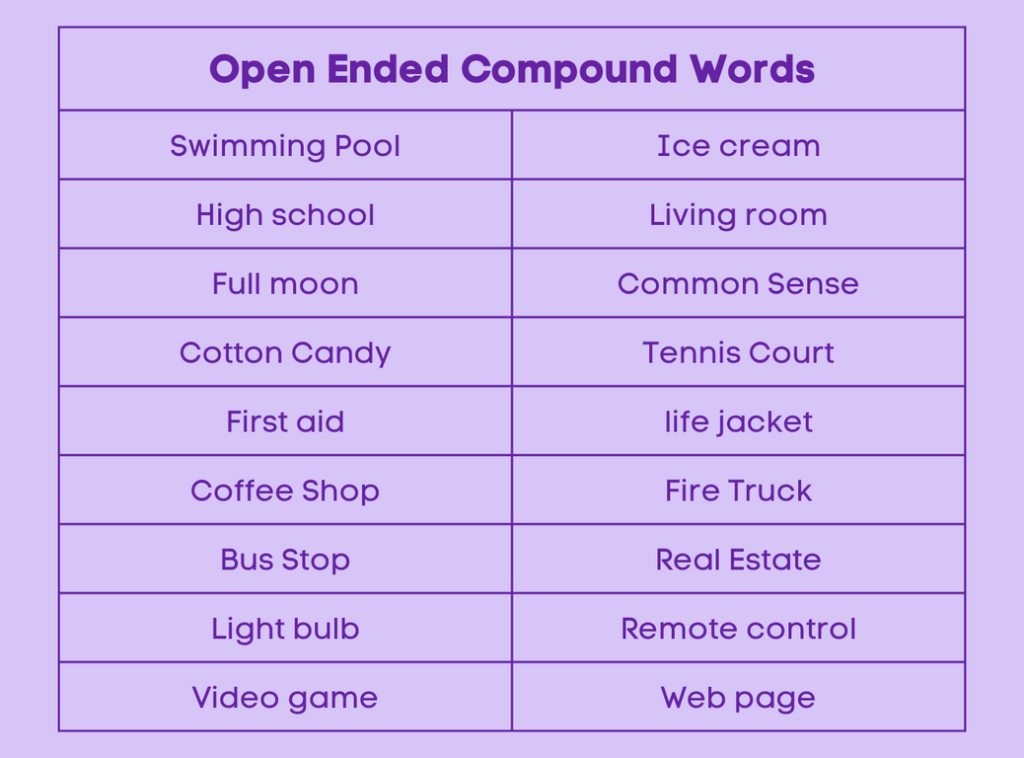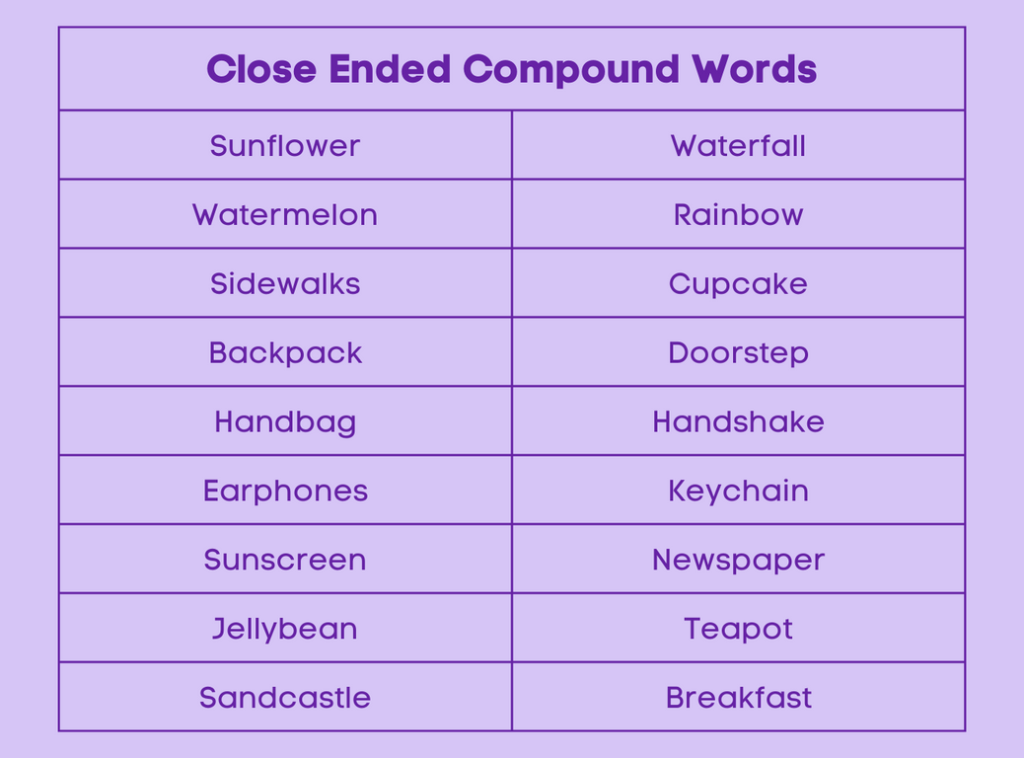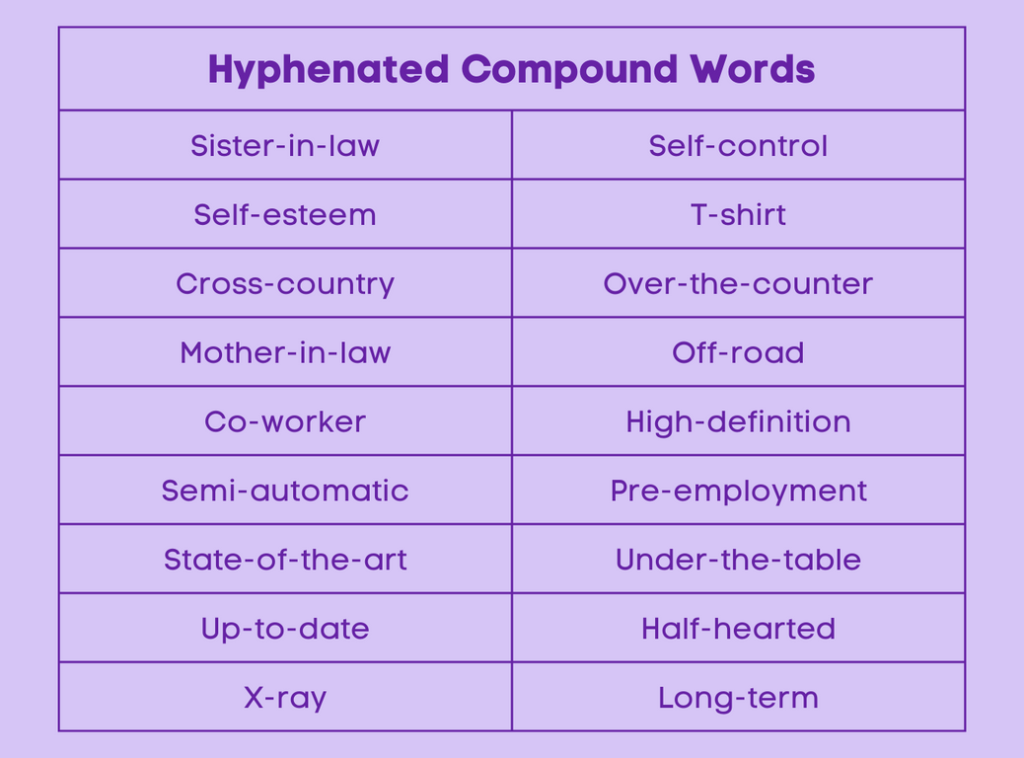What are Compound Words? – Meaning and Examples
Table of Contents
Introduction
Compound Words
Compound words are formed by combining two or more words to create a new word with a distinct meaning. Understanding the types of compound words, such as open, closed, and hyphenated, as well as the rules for pluralizing compound nouns, is essential for effective communication and writing.
Analogy of Definition
What are Compound Words?
Compound words are created by joining two or more words together to form a single word. These words can be written as one word, hyphenated, or as separate words. The meaning of the compound word is often different from the individual words used to create it. They can take form of nouns, verbs, adverbs and adjectives.
Method
Types of Compound Words
There are three main types of compound words:
1. Open Compound Words: These are written as separate words, such as “post office” or “full moon.”

2. Closed Compound Words: These are written as a single word, such as “bedroom” or “sunflower.”

3. Hyphenated Compound Words: These are written with a hyphen between the words, such as “mother-in-law” or “well-being.”

Pluralizing Compound Nouns
When pluralizing compound nouns, the general rule is to add the plural marker to the most significant word in the compound. For open and hyphenated compound words, the plural marker is added to the main noun. For closed compound words, the plural marker is added to the end of the word.
Examples
1. Open Compound Word: “toothpaste” (tooth + paste)
2. Closed Compound Word: “basketball” (basket + ball)
3. Hyphenated Compound Word: “sister-in-law” (sister + in + law)
Quiz
Tips and Tricks
1. Open Compound Words
Tip: Open compound words are written as separate words, such as “swimming pool” or “ice cream.”
2. Closed Compound Words
Tip: Closed compound words are written as a single word, such as “classroom” or “sunflower.”
3. Hyphenated Compound Words
Tip: Hyphenated compound words are written with a hyphen between the words, such as “mother-in-law” or “well-being.”
4. Pluralizing Compound Nouns
Tip: When pluralizing compound nouns, add the plural marker to the most significant word in the compound.
5. Creating Compound Words
Tip: Use compound words to create new words with specific meanings, such as “butterfly” or “toothpaste.”
Real life application
Story: “The Adventure of Compound Words”
In a world filled with compound words, a young writer named Emma embarked on a journey to explore the different types of compound words and their usage in everyday life.
Encounter 1: The School Project
Emma was assigned a school project to create a poster featuring open compound words. She included words like “swimming pool,” “ice cream,” and “post office” to showcase the variety of open compound words used in daily life.
Encounter 2: The Writing Contest
As Emma participated in a writing contest, she utilized closed compound words like “classroom,” “sunflower,” and “basketball” to enhance the descriptive elements of her story, impressing the judges with her creative use of compound words.
Encounter 3: The Family Reunion
During a family reunion, Emma observed the use of hyphenated compound words such as “sister-in-law,” “mother-in-law,” and “well-being” in conversations, recognizing the significance of hyphenated compound words in expressing familial relationships and well-being.
FAQ's
Like? Share it with your friends
